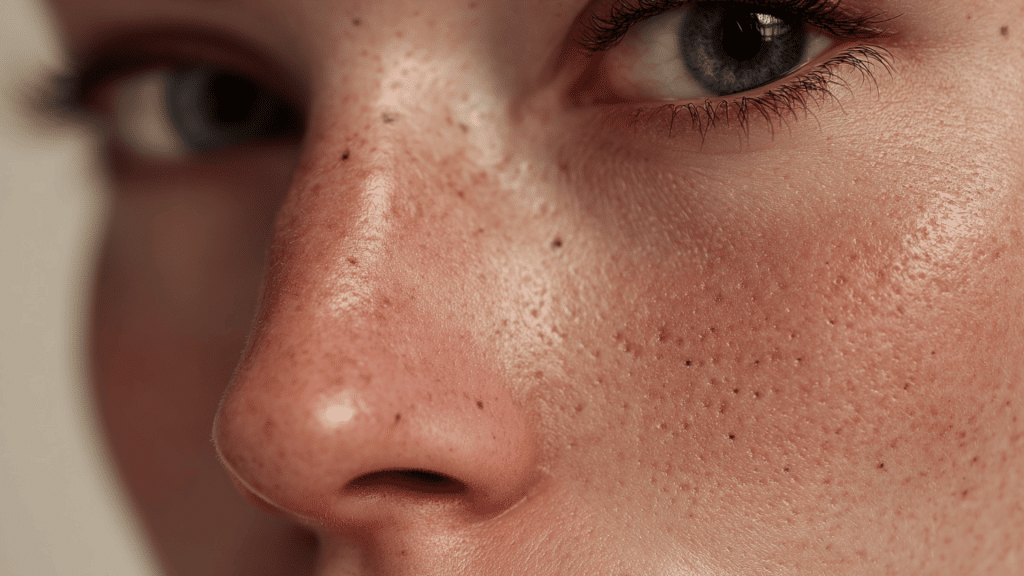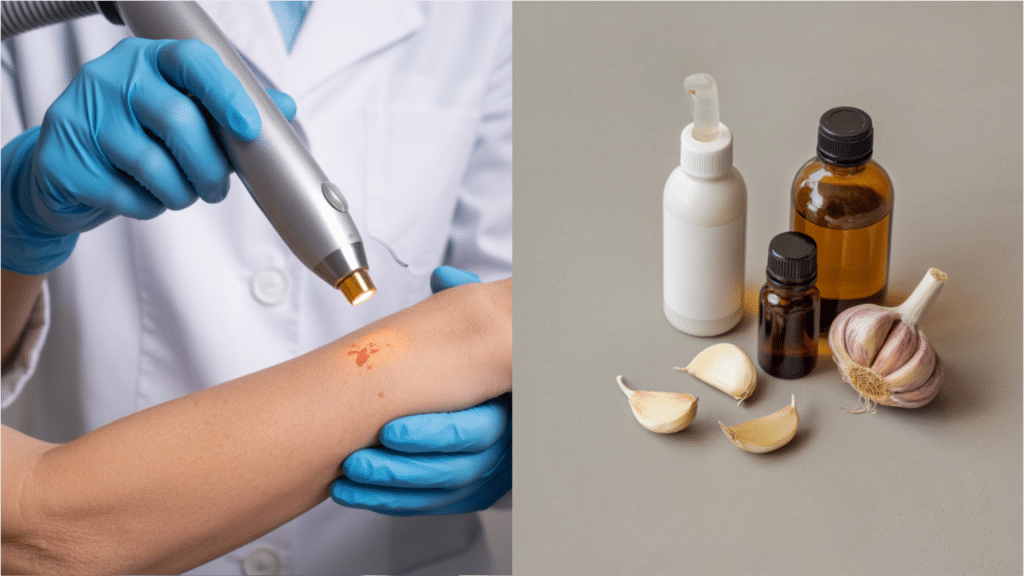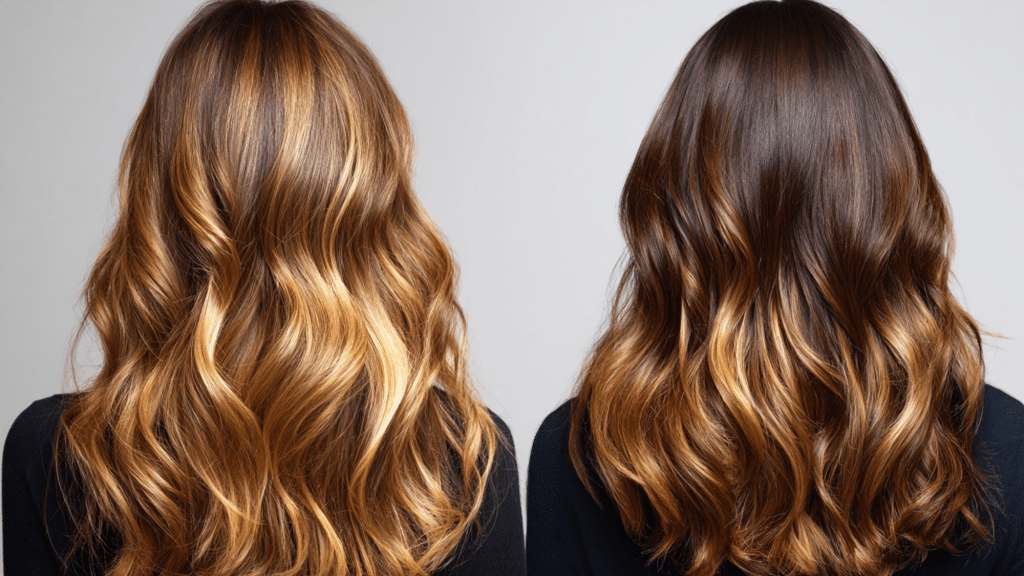Clogged pores affect millions of people every day, causing visible changes on the skin that can impact confidence. If you’re wondering what clogged pores look like, you’re not alone in this concern.
These small skin openings become blocked with oil, dirt, dead skin cells, and bacteria, forming noticeable bumps, dark spots, or rough patches on your face.
Clogged pores on the face appear in different ways, sometimes as tiny white dots, other times as dark specks, and occasionally as red, swollen areas.
Understanding how to identify these skin changes is the first step toward managing them effectively.
This guide will show you exactly what clogged pore bumps look like and provide proven methods to treat and prevent them from returning.
Understanding What Clogged Pores Look Like
When pores become blocked, they manifest in several ways, depending on the skin type and the nature of the blockage.
Whiteheads are small, flesh-colored or white bumps that occur when oil, dirt, and dead skin become sealed under a thin layer of skin. These closed comedones appear as tiny, raised dots and are very common.
Blackheads form when the pore remains open, allowing the trapped material to oxidize and turn dark. They often appear as scattered dark spots on the nose, chin, and forehead.
Papulesare red, tender bumps that develop when bacteria infect a clogged pore, causing inflammation but no visible center.
In some cases, clogged pores don’t form distinct blemishes but instead create a rough texture, leaving the skin feeling uneven or bumpy to the touch, even if the clogs aren’t easily visible.
Where Clogged Pores on the Face Commonly Appear
Clogged pores often appear in areas with higher oil production or where dirt and residue tend to accumulate. These spots are more vulnerable because of larger pores and daily exposure to products or touch.
Knowing where they appear most often helps you give extra care and attention to those zones.
| Area | Explanation |
|---|---|
| T-Zone | Most oily area: nose is prone to blackheads due to its large pores. |
| Cheeks | Whiteheads or bumps are common with oily/combination skin. |
| Hairline & Jawline | Bumps from hair products or frequent touching. |
| Eyes & Temples | Small bumps if heavy products are used. |
By spotting where clogged pores commonly appear, you can fine-tune your skincare routine. Targeting these areas reduces buildup, keeps pores clear, and promotes healthier-looking skin overall.
What Causes These Skin Changes
Clogged pores don’t happen overnight. They form when several internal and external factors disrupt your skin’s natural balance. Understanding these causes helps you target the root of the problem instead of just treating the symptoms.
- Excess oil production: Extra sebum mixes with dead skin cells, clogging pores.
- Dead skin buildup: When cells don’t shed properly, they combine with oil to form blockages.
- Bacterial growth: Trapped pores create conditions that favor bacterial growth, leading to redness and inflammation.
- Environmental factors, such as pollution, humidity, and chemicals, can add debris or trigger the release of more oil.
- Hormonal changes, Such as puberty, menstruation, pregnancy, and stress, can make oil glands more active.
By knowing what triggers clogged pores, you can adjust your skincare and lifestyle habits more effectively. Small changes in daily routines often make a big difference in keeping skin clear and healthy.
How to Identify Different Types of Clogged Pores
Recognizing the specific type of blocked pores helps you choose the most effective treatment approach.
- Size and Color: Small, flesh-colored bumps indicate whiteheads, while dark spots suggest blackheads. Larger, red, inflamed areas mean infection.
- Texture: Run clean fingers gently across your skin. Healthy pores feel smooth, while clogged areas feel bumpy or raised.
- Location Patterns: Forehead bumps may be related to hair products, while jaw problems could be connected to face-touching or skincare products.
- Pain Level: Blackheads and whiteheads typically don’t hurt, but infected pores feel sore when touched, indicating inflammation.
Effective Treatment Methods
Treating clogged pores requires consistent care and the right approach for your specific skin type and concerns. The right methods can clear blockages, prevent new ones, and restore a healthier skin balance.
1. Gentle Cleansing
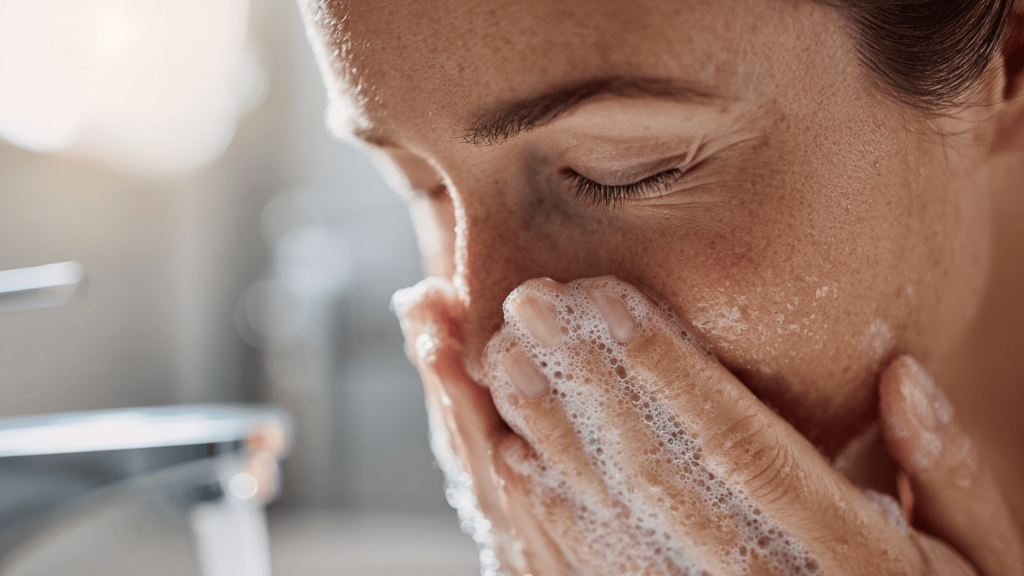
Forms the foundation of any treatment plan. Wash your face twice daily with a mild, non-comedogenic cleanser that removes excess oil and debris without over-drying your skin.
Harsh scrubbing can worsen the problem by irritating your skin and triggering more oil production.
2. Chemical Exfoliation
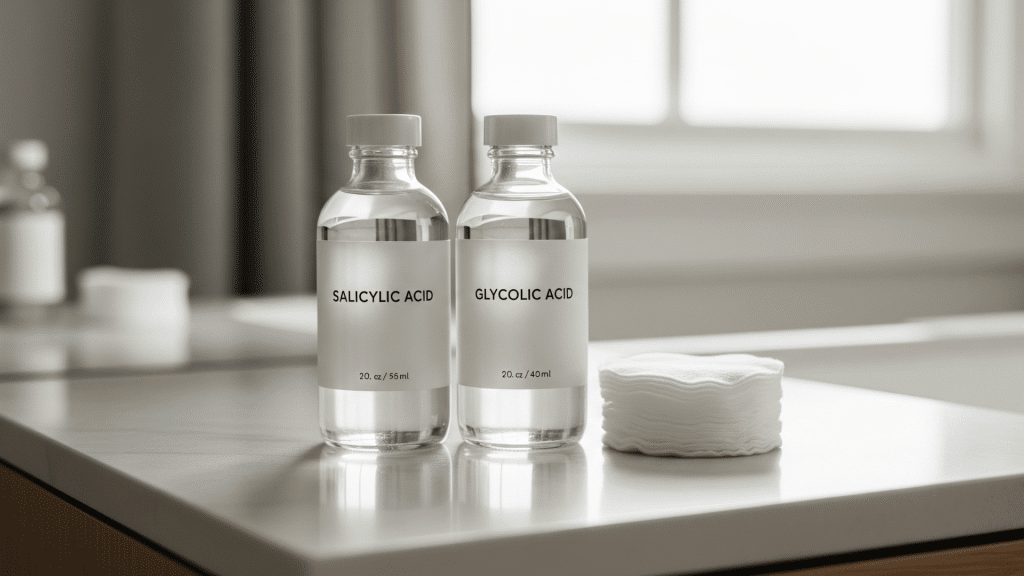
Works more effectively than physical scrubs for clearing blocked pores. Salicylic acid penetrates into pores to dissolve oil and dead skin cell buildup.
Glycolic acid helps remove the top layer of dead cells that can contribute to blockages.
3. Proper Moisturizing
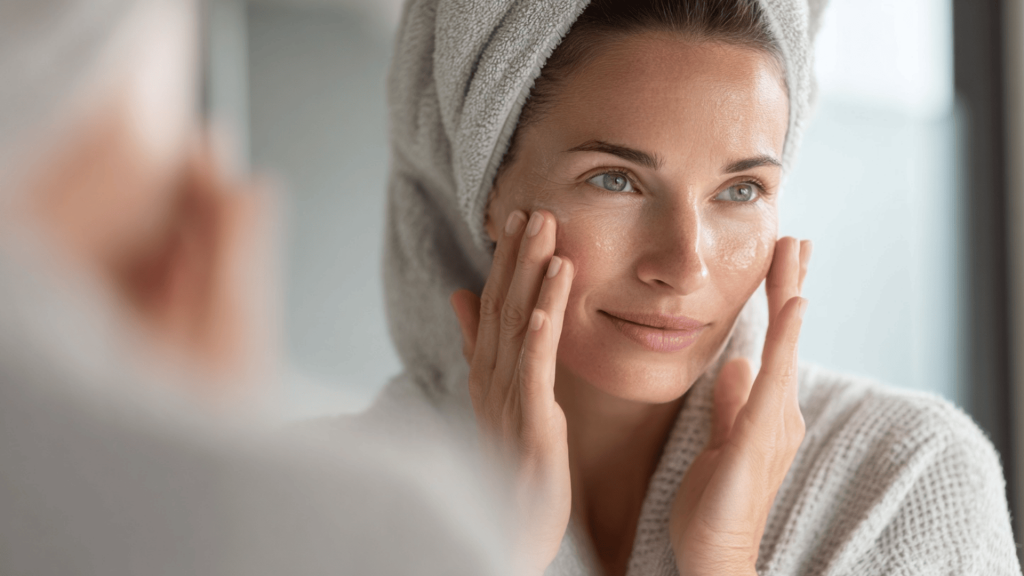
It might seem counterintuitive, but it’s essential. When your skin becomes too dry, it compensates by producing more oil, which can lead to more clogged pores.
Choose lightweight, water-based moisturizers that hydrate without blocking pores.
4. Targeted Treatments
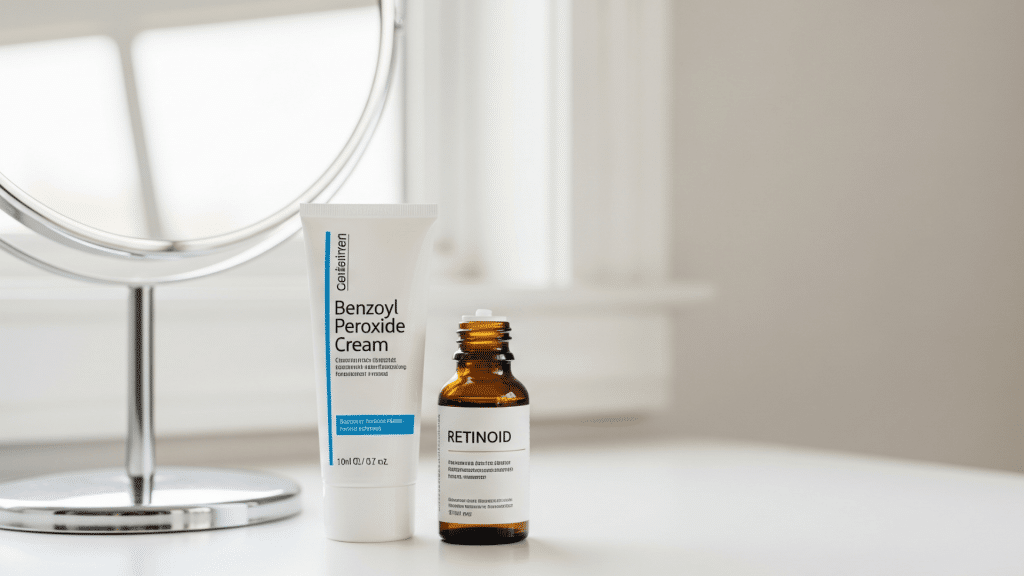
It can address specific types of blockages. Benzoyl peroxide helps kill bacteria in infected pores, while retinoids help prevent new blockages by increasing skin cell turnover.
5. Professional Treatments
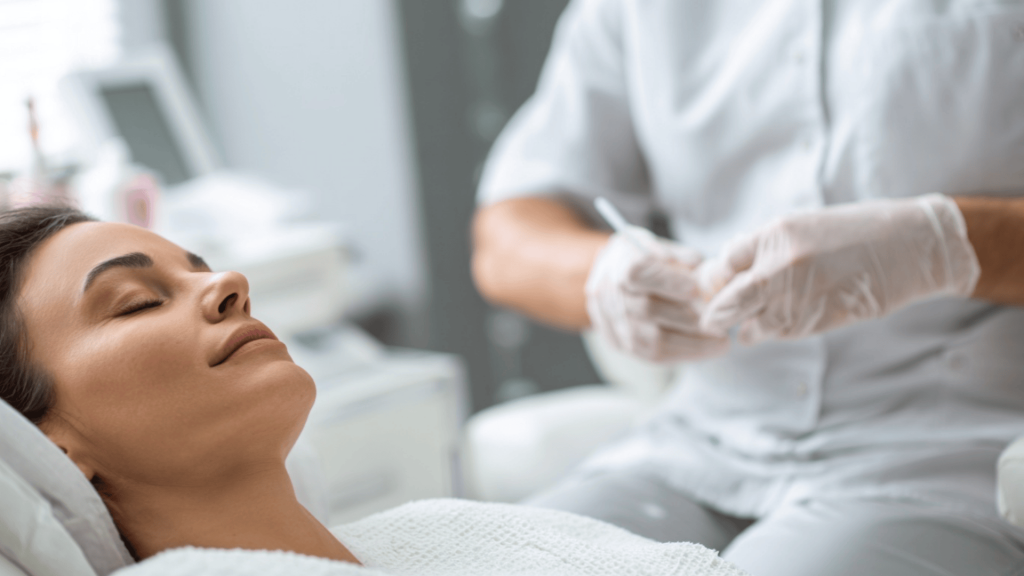
Offered by dermatologists, these services can provide more intensive care. These include chemical peels, extractions, and microdermabrasion, which safely remove stubborn blockages.
Prevention Strategies That Work
Preventing clogged pores is easier than treating them, and consistency is key.
Daily care should include gentle cleansing, light moisturizing, and the application of SPF.Use non-comedogenic products to prevent pores from clogging.
Remove makeup before bed, opt for mineral formulas whenever possible, and clean your brushes to prevent bacteria buildup.
Lifestyle habits help. Wash pillowcases often, avoid touching your face, and keep phones or glasses clean. Diet may matter; some see clearer skin by reducing dairy and high-glycemic foods.
Managing stress supports skin health, as stress-driven hormones can increase oil and clog pores.
When to Seek Professional Help
Most clogged pores can be improved with steady home care, but some situations require expert attention. Knowing when to seek help ensures you don’t delay treatment and risk long-term skin issues.
A dermatologist can provide stronger solutions tailored to your needs.
| Situation | Why It Matters |
|---|---|
| No results after 6–8 weeks | May need stronger treatment. |
| Cystic or widespread bumps | Risk of scarring without prescriptions. |
| Scars or dark marks | Dermatologist care prevents damage. |
| Pain or discomfort | It could signal an infection that requires medical attention. |
Seeking professional advice early can help prevent scarring, reduce discomfort, and expedite the healing process. Don’t wait until the problem worsens; expert care can make all the difference.
Creating Your Personal Care Plan
Building a personal care plan for clogged pores ensures your routine works for your unique skin. A structured approach helps you stay consistent while avoiding overwhelm.
- Build a Core Routine: Begin with gentle cleansing twice daily, light moisturizing, and consistent sun protection.
- Add Treatments Gradually: After 2–3 weeks, introduce targeted products, such as salicylic acid or retinoids, once your skin has adjusted.
- Watch Your Skin’s Response: Expect a short adjustment phase, but stop or adjust if irritation or breakouts worsen.
- Track Your Progress: Keep a simple log of products and results to learn which ingredients help or harm your skin.
With patience and regular adjustments, your plan will reveal what truly benefits your skin. Over time, this consistency leads to clearer, healthier results.
Final Thoughts
Recognizing what clogged pores look like is the first step toward healthier skin.
They often appear as whiteheads, blackheads, rough bumps, or red, inflamed spots, especially in areas prone to oil, such as the T-zone.
These bumps can also form anywhere debris blocks pores. Managing them requires gentle, consistent care, regular cleansing, the right treatments, and preventive habits.
Results take time, often weeks of routine. Avoid harsh methods that worsen irritation. With patience and the right approach, you can clear your pores and keep smooth, healthy skin.
Ready to take action? Start building your pore-friendly routine today and enjoy clearer, more confident skin.

